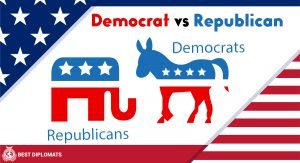© Howard Gardner 2024 (first published August 26, 2024)
“They” or “Them” or “Those guys”
In the early 1950s, with his wife Carolyn and other colleagues, social psychologist Muzafer Sherif carried out an intriguing “real-life” experiment. It was an experiment, because he wanted to test a hypothesis in his area of expertise. It was “real life” because—in the days when “human subjects/studies committees” were not yet mandated—researchers were pretty much free to do what they wanted—so long as they did not violate their own ethical standards. (Stanley Milgram’s “obedience to authority” studies (1974) were the most famous—and notorious—example of the looser norms of that time.)
The Sherif team took over a summer camp for boys called “Robbers Cave” (1961). Upon their arrival, the 24 boys—all sharing similar social-economic backgrounds—drew straws. Thereafter they were placed in one of two gangs—the Eagles or the Rattlers. For several weeks, the teams competed very aggressively with one another in games and other challenges that yielded clear winners and losers. As the end of the camp season approached, most Rattlers could not abide most Eagles—and vice versa.
Since this was an experiment (and not preparation for a life in the military!), the Sherif team did not want campers to disperse while they still despised half of their peers. Accordingly, a few final “manipulations:” the group was posed challenges—or presented with superordinate goals—that could only be met if the Eagles and Rattlers were to join forces. Examples: fixing a truck that had broken down; repairing the water system; or extinguishing a fire. Even if there was lingering resistance to converting former “enemies” into “friends,” these restorative manipulations worked sufficiently well. By the time they packed their bags to return home, the campers were on reasonable terms with one another.
We live in a stressful time. Certainly, in the United States (note the name, which seems almost taunting) and likely as well in many other countries, there is an excessive focus—if not an obsession—with the “I.” Accordingly, along with many other scholars and commentators, our research group has been examining the factors—experimental manipulations or levers in “real life”—that might help to nudge the needle from “I” to “we.” Indeed, as I drafted this blog during the summer of 2024, political scientist Robert Putnam (2024) has yet again chronicled the damage to any society when so many of its citizens feel alone, isolated, and not part of a group.
To be sure, there’s a big difference between feeling lonely and isolated, on the one hand—that might yield a neutral “they”—as opposed to feeling clearly hostile to others—yielding instead an alien and despised “they.” In our investigations, it’s important to consider what it means to have or to create an “out group,” the costs attendant thereto, and the ways that the situation might be alleviated—or even dissolved.
Stepping back from the researcher’s clipboard, let me draw on my own experience. I endeavor to do so in a way that yields insight, rather than engenders discomfort. As someone raised as a reform Jew, but essentially areligious for decades, I was surprised—if not shocked—to discover that, as I reflected on this topic, the term “goy” readily popped up. As conventionally defined, “goy” simply means “not Jewish;” it can be used in a completely neutral way—like the term “visitor” might be used in contrast to the permanent residents of a town. And indeed, I think that for many, if not for most Jewish persons, “goy” or “goyim” does not contain much of an affective punch. (Note: I could well have thought of the term “gentile” instead of “goy” but I am trying to be faithful to my own thought processes.)
As described, the situation could well be different. Both within the Jewish community (however defined or delineated) and outside the Jewish community (in the contemporary United States, Jews account for fewer than 3 % of the population), the term “goy” can be considerably more loaded. For some Jews, it may mean “someone who is completely different from us and should be shunned,” or “someone who does not and will never understand our way of being.” And for some “goyim”—or, if you prefer, “gentiles,” —the concept of “not Jewish” can be used as a way of promoting one’s own (typically Christian) background and/or of disrespecting or disparaging anyone who harbors any “Jewish blood.”
No need to elaborate on this point—alas, it will be anathema to most readers. And of course, analogous conceptualization would likely exist even if there were no Jews. Whether “in group” vs “out group,” citizens vs interlopers or immigrants, or true-blooded vs aliens, the capacity of human beings to dislike, disdain, disparage, or simply “diss” others seems to be a basic–albeit not praiseworthy—trait, one easily incentivized and captured vividly by the Sherifs and their research team.
When does this begin? How does this begin? Need it begin? And if indeed it’s begun, how can it be defused, diffused, countered, or even ended? There’s significant literature on the creation and maintenance of “in groups” and “out groups.” While most of the literature deals with children of school age, the origins of such groupings can be discerned much earlier. Indeed, thanks to researchers like Yarrow Dunham, we know that within the first year or two of life, children already distinguish between members of their own racial/ethnic groups and those from visibly distinctive groups. There need not be any particular valence on this distinction—it can be difference without disdain—but there’s no question that it can be pushed (perhaps all too easily) into an in-group/out-group contrast or even clash.
Above, in introducing the notion of “we” vs “they” it was easy—and perhaps even natural— for me to think of religious groups. Dating back to Biblical times, and no doubt earlier, individuals aligned as Hebrews (Israelites) or as Philistines. And in subsequent eras, there are Christians vs Non-believers (agnostics, atheists), or—within Christianity—Catholics vs Protestants; and outside the faith, Christians vs Muslims or (within Islam) Sunnis vs Shiites.
But from a contemporary vantage point, religions are just one form of divider, one variety of “we” vs “they.” Individuals within our country divide along political lines (Democrat vs Republican), financial (wealthy vs getting-by vs poverty-stricken), and along racial lines, though there are many distinctions within and across sub-populations. A 900-page history of the Muslim World (Cook, 2024) chronicles numerous tensions and conflicts—as well as occasional cooperation— among subgroups of the followers and the descendants of the Prophet Muhammad (c. 570-632 AD).
In short, while our compelling interest has been in helping individuals move the needle from “I“ to “we” we cannot simply ignore the inevitable presence and the often powerful shadow of “they.”
Where can we begin to counteract these tendencies? A few words about our current enterprises:
Our Good Starts group has recently launched two prongs of research:
With young children (roughly 3 to 6): we have created scenarios where these youngsters have the opportunity to show us, among other things, who they like to play with and why, and whether outgroups are distinguished (no “they”), whether outgroups are neutral (neutral “they”), or if the outgroup is to be excluded (negative “they”) and in what circumstances.
To be schematic: No “they”; Neutral “they”; Negative “they.”
With adults having a stake in early childhood education—ranging from the parents of children enrolled in preschool, to the teachers and other personnel on campus, to the local administrators who set policy: We are posing analogous questions to the ones we are asking children and soliciting thoughts about the relationship between “I,” “we,” and “they” in different contexts.
At present this is clearly an academic undertaking—perhaps even an academic exercise. That said, the questions explored are important and timely. In a country, and indeed a world, where discrimination, intolerance, hatred, and even genocide are patent—and where the mediating or moderating forces are all too often feeble or evanescent—any effort to help all persons feel part of the same world, having similar stakes, and having an impetus to work together—has become absolutely crucial.
And it can’t start young enough!
The Good Starts Project is generously funded by the Saul Zaentz Charitable Foundation.
REFERENCES
Cook, M. (2024). A history of the Muslim world : from its origins to the dawn of modernity. Princeton University Press.
Dunham, Y., Baron, A. S., & Banaji, M. R. (2008). The development of implicit intergroup cognition. Trends in Cognitive Sciences, 12(7), 248–253. https://doi.org/10.1016/j.tics.2008.04.006
Milgram, S. (1974). Obedience to authority; an experimental view ([1st ed.]). Harper & Row.
Garcia-Navarro, L. (2024). Robert Putnam Knows Why You’re Lonely: The Interview. New York Times (Online).
University of Oklahoma. Institute of Group Relations, & Sherif, M. (1961). Intergroup conflict and cooperation: The Robbers Cave experiment (Vol. 10, pp. 150-198). Norman, OK: University Book Exchange.






